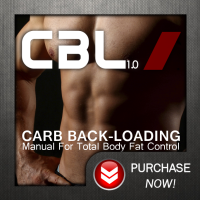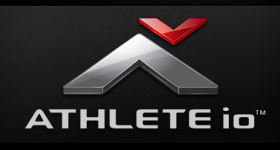We Have A Winner
You’ve been reading this book in order to learn how to rid your body of those annoying fat deposits—and, so far, the entire discussion has detailed what’s wrong with everything else. By now, I hope you’re convinced to at least consider trying a different approach. The current options, however, seem useless for fat loss, so what’s left?
Returning to the primary goal—weight loss while sparing muscle—there’s only one option to reconsider: The ultra-low carb direction. With diets containing high levels of carbohydrates, if carb supplies ever fade too rapidly—i.e., when you eat too quickly, or during exercise—muscle is converted to sugar for energy. Muscles continue wasting away until your body either receives a fresh supply of carbohydrates, or it no longer needs any. While they’re not always perfect, low-carb diets stop muscles from being destroyed for energy.
When low-carb plans keep carbohydrates low enough—and dietary fat high enough—the resultant change in metabolism makes the body more comfortable burning fat for energy, as opposed to muscle. Carbohydrate levels must be kept consistently minimal because the body always prefers carbs. Once these run out on a carb-rich diet, muscle becomes your body’s next source of energy. As a carb-restricted diet wears on, however, muscle remains safest from destruction when dietary carbohydrates are lowest, making the ultra-low carb diet an excellent starting point for a fat loss plan.
Aside from sparing muscle, the ultra-low carb diet provides several other advantages. It avoids some of the physical stress associated with dieting—meaning lower cortisol levels—and there’s little insulin around to initiate the growth of new fat cells. The very nature of the ultra-low carb diet keeps both insulin and cortisol levels extremely low, making it immune to the most disastrous side effects of traditional diets.
 The ultra-low carb diet also controls hunger more readily than other types of diets. Contrary to popular belief, insulin is not the most potent hunger-stimulating hormone, and its role in the process is poorly understood. Theories put forth in many popular diets lack conclusive evidence.
The ultra-low carb diet also controls hunger more readily than other types of diets. Contrary to popular belief, insulin is not the most potent hunger-stimulating hormone, and its role in the process is poorly understood. Theories put forth in many popular diets lack conclusive evidence.
It’s the hormone ghrelin, in fact, that stimulates hunger more than any other. When ghrelin levels are high, hunger rises. When levels fall, so do your cravings. Carbohydrates cause a crash in ghrelin levels immediately after meals, delivering a feeling of satisfaction. Carb-based diets, however, cause ghrelin to spike between meals, making hunger extremely powerful. The ultra-low carb diet avoids this problem by keeping ghrelin levels under control. Your levels are never too high, and they’re most often low.
The other major problem when dieting is the plunge in metabolic rate, which is also partly avoidable with an ultra-low carb diet. Your basal metabolic rate—the rate at which your body burns energy when resting—slowly falls on an ultra-low carb diet. With typical diets, it plummets within the first week. Regrettably, problems with leptin levels falling still persist, and metabolism will drop. Of paramount importance is finding some way to avoid these two problems. If you don’t, your fat cells will never empty—and if they do, a plateau will quickly develop.
The real trick is finding some way to preserve—or even increase—metabolism and levels of fat burning hormones like leptin. Resolving this problem guarantees ongoing fat loss, making rebounds unlikely.
Want to know how thousands of people worldwide are torching fat from their bodies in record time? Purchase The Carb Nite Solution now.








Recent Comments